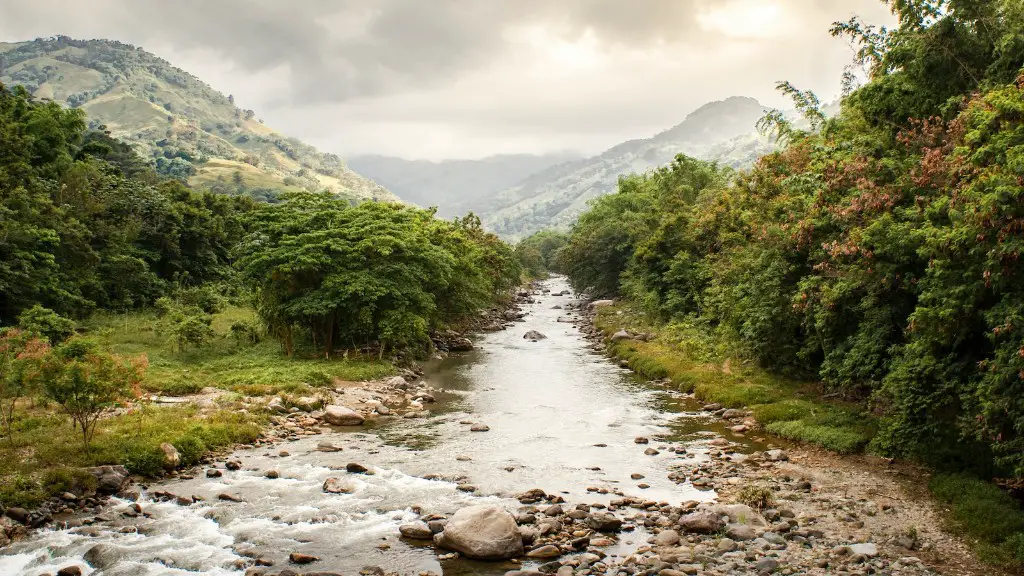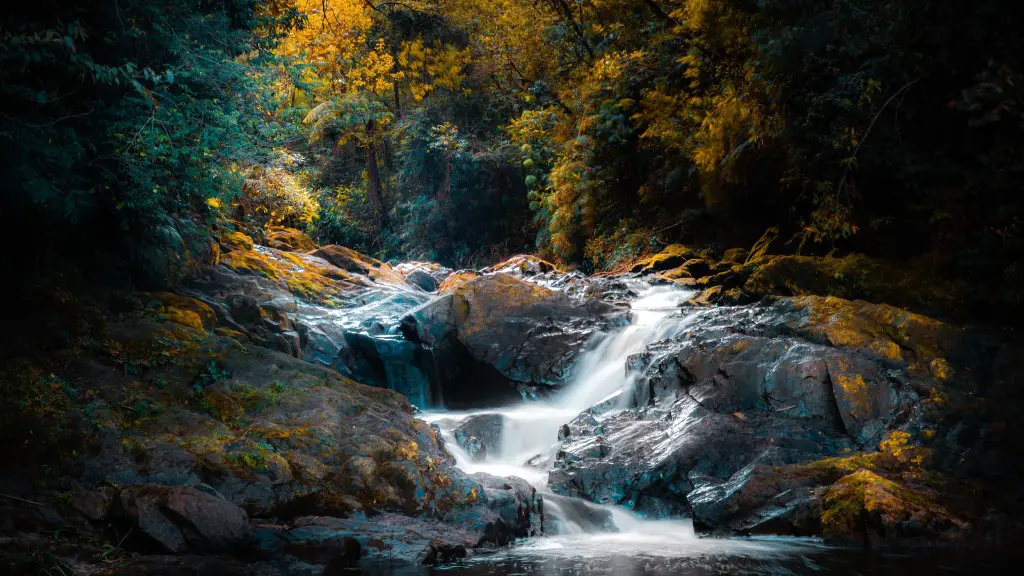The Ganges River is a sacred river in Hinduism and is used for religious ceremonies, such as baptism and cremation. The river is also considered to be a source of spiritual power and is worshiped by Hindus.
The Ganges River is used for many things, including irrigation, drinking water, transportation, and hydroelectric power.
What is the main industry in the Ganges River?
The potential for hydroelectric power in the Ganges and its tributaries is enormous, with estimates ranging from 51,700 to 128,700 megawatts. Of this potential, about two-fifths lies within India and the rest in Nepal.
Hydroelectric power is a renewable and environmentally friendly source of energy, making it an attractive option for developing countries like India and Nepal. In addition, hydroelectric power can provide a reliable and stable source of electricity, which is critical for economic development.
There are many challenges to developing hydroelectric power in the Ganges basin, including environmental concerns, the high cost of development, and the risk of conflict with other users of the river (such as fishermen). However, if these challenges can be overcome, hydroelectric power could play a major role in the development of the region.
The Ganges river is one of the most sacred rivers in India and is also one of the most polluted. Every day, millions of gallons of sewage and industrial waste are dumped into the river. In addition, the river is used as a dumping ground for the bodies of dead animals and humans. As a result, the river is teeming with disease-causing bacteria and is a major health hazard.
Despite its pollution, the Ganges river is still a vital water source for hundreds of millions of people. In many parts of India, the river is the only source of water for drinking, bathing and irrigation. In order to protect the health of those who rely on the river, it is essential that efforts are made to clean up the river and reduce the amount of pollution that is being dumped into it.
Is the Ganges River used for trade
The Ganges plains surrounding Varanasi are responsible for about 40 percent of India’s traded goods. These plains are extremely fertile and provide an ideal environment for trade and commerce. There are many ports and docks along the Ganges River, which makes transportation of goods easy and efficient. In addition, the Ganges River is a major thoroughfare for trade and commerce in India.
The Ganges River is one of the most important rivers in the world. It begins in an ice cave in the Himalayan Mountains and flows through India and Bangladesh. The river supports over 400 million people and thousands of animal and plant species. It is sacred to the Hindu people and worshiped as a goddess.
Why is the Ganges River so dirty?
The Ganges is one of the most important rivers in India, and it is in danger of becoming severely polluted and disrupted. Too much water is being removed for farming and other uses, and barrages and dams are disrupting the river’s natural flow. Pollution from homes and industries is also badly contaminating the river.
The Ganges river is one of the most polluted waterways in the world, due to the high levels of sewage that are emptied into it every day. Only about half of this sewage has undergone any kind of treatment, which means that the river’s waters are full of harmful bacteria and other contaminants. This pollution poses a serious health risk to anyone who comes into contact with the water, and it is important to take measures to avoid contact with it if possible.
Does the Ganges River smell?
The river stinks because of the sewage and effluents that go into it. The children who play in the pools are at risk of getting sick from the contaminated water. The tanneries that are near the river are one of the main sources of pollution. The chromium from the tanneries is a toxic heavy metal that can cause health problems.
Ganga is one of the holiest rivers in India and is known for its self-cleansing properties. The river’s waters are said to have magical properties that ensure that the water does not spoil even when stored for years. This is a very important property of the river and is what makes it so special.
Are there sharks in Ganges
There are six species of river sharks found in the world, out of which the Ganges shark (Glyphis gangeticus) is endemic to India. It inhabits the River Hooghly in West Bengal, as well as the rivers Ganges, Brahmaputra, Mahanadi in the states of Bihar, Assam and Orissa.
The Ganges shark is a critically endangered species and is facing the risk of extinction. The main threats to this species are habitat loss and degradation, overfishing and turtle hunting.
The Ganges shark is an apex predator and plays an important role in the river ecosystem. The loss of this species would have a serious impact on the ecosystem.
There is an urgent need to conserve this species and its habitat. measures should be taken to reduce the threats to this species.
The river is a vital source of livelihood for many people in India and Bangladesh. It supports agriculture, animal husbandry, fisheries, tourism, and river-based trade and transport. This contributes significantly to the livelihood, food and nutritional security of about one-third of Indian and two-thirds of the Bangladeshi population. The river is an important part of the economic and social fabric of these countries and plays a vital role in their development.
Why is Ganges so important?
The Ganges River is a sacred place for Hindus. It is seen as the personification of the Goddess Ganga. Hindus believe that bathing in the river on certain occasions can lead to the forgiveness of sins and help attain salvation.
This is good news for the rivers of the world, as they will continue to flow even after the glaciers have melted. The flow of the rivers will not be affected at all by the glacial melt, according to the paper. This means that the rivers will still be able to provide water for people and animals even after the glaciers are gone.
What happens if you swim in the Ganges
Hindus believe that water has the power to cleanse away sin. For many Hindus, even dirty water is still holy and taking a dip in it can help to cleanse away sin. It is also a common practice in Hinduism to sprinkle a little bit of water on your head as a way of being blessed by the water.
Waterborne illnesses are a major problem in India, and experts believe that pollution in rivers is a major contributing factor. An estimated 15 million children die each year from waterborne diseases, and researchers have also discovered the emergence of superbugs in Ganges water samples. These are bacteria that are resistant to most commonly used antibiotics. The situation is dire and urgent action is needed to address the problem.
Why is the Ganges drying up?
The Ganges river is one of the most important rivers in India. However, it is currently facing a serious threat due to lack of water. For many years, the river’s flow has been slowly decreasing, and activists blame this on unsustainable extraction of water from the river. Groundwater pumping is dramatically lowering water tables in the river’s floodplain, which is causing the river to dry up. If this trend continues, it could have a devastating impact on the many people who depend on the Ganges for their livelihoods.
The Ganges River in India is one of the most polluted bodies of water in the world. Despite this, there is a myth that bathing in it or drinking it is completely safe. This is not the case, and the river should be avoided if possible.
Do people get sick bathing in the Ganges River
Although bathing in the Ganga River can be considered a religious experience for many, it can also expose people to high levels of faecal coliform bacteria. This is due to the fact that the river is used as a dumping ground for human waste and other pollutants. As a result, it is advised that people take precautions when bathing in the river, such as avoiding contact with the water and using a face mask.
Hindus believe that sins accumulated in past and current lives require them to continue the cycle of death and rebirth until they are cleansed. If they bathe at the Ganges on the most auspicious day of the festival, believers say they can rid themselves of their sins.
Warp Up
The main purpose of the Ganges River is for irrigation. It is also a source of drinking water and water for domestic use for millions of people who live along its banks. In addition, the Ganges is used for transportation, both of people and goods.
The Ganges river is used for a variety of purposes, including irrigation, transportation, and power generation. It is also a major source of freshwater for millions of people who live along its banks. The river has a long history of religious and cultural significance in India and is considered sacred by many Hindus.





